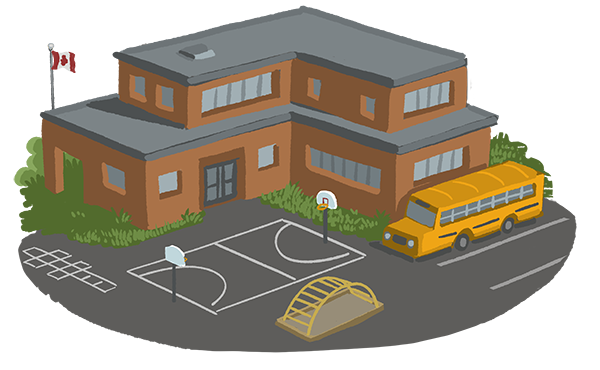SAFER SPACES: CREATING GUIDELINES BUILDING SAFER SPACES

Before starting an activity from the KHST! or Stress Lessons programs, we suggest that
educators and service providers take the time to create a Safer Space with their students.
By doing so, students may feel more comfortable sharing about their stress and how it affects
them. This can be done through the following activity.
Activity: Building Safer Spaces
| Time: | 5-10 Minutes |
| Materials needed: | Whiteboard, whiteboard markers |
| Why this is important: | In safer spaces, classroom norms and etiquette are established for students to respectfully engage in conversations. |
Prompt questions: (write down on whiteboard or flipchart) What things do you need to make you feel safer in a space? What things might happen when we feel safer in a space? What happens when we don’t?
Close with a group agreement
The activity should be concluded by asking students to give examples of classroom norms based on the elements of a SAFER space. Explain to students that these norms will be used for classroom discussions and that these group agreements can always be adjusted.
Reminder: Cultivate Care
Bringing awareness, balance, and connection to yourself and to your students means being intentional about providing care. Make time for check-ins with your students, colleagues, and yourself!
Suggestions:
- Transformative learning can be powerful and closures provide an opportunity for participants to transition out of the activity in a healthy way.
- Closing elements can be as light as high fives or a group deep breathing activity. Recommendation: Refer back to some of the breathing activities mentioned in the KHST! and Stress Lessons guides.
Some examples of SAFER Spaces
| Element | What it looks like | Why? |
| Controversy with Civility: Multiple perspectives, viewpoints and opinions are accepted | Disagreement signals that many ideas are entering the discussion, not that the group is not getting along. Example: Allow room for challenge. Provide sentence starters for students who are interested in engaging with different perspectives. I disagree… I’m going to build off.. Tell me more about why you think that… When you say…it makes me think… | As educators or group leaders we are not there to police the beliefs and perspectives of others but to build safer spaces for growth. |
| Owning Intentions and Impacts: We are accountable for our words & actions | Understand that we are all learning. We apologize for actions or words that are offensive Example: Use communication strategies such as I statement, I feel …. (make a clear statement of how you feel); when ….. (name the specific behavior or situation that caused you to feel that way); because …. (say why the behavior or event is upsetting) | Accountability is necessary in our learning and builds a sense of our self-reflection towards our intentions. |
| Challenge by Choice: Option to ‘pass’ or step in and out of unsafe conversation | Create measures where students know it’s safe to opt-in and out of conversations. Example: As part of the introduction, let students know that pronouns are optional, so they know it’s okay if they are not comfortable sharing them. | Self-disclosure and vulnerability are emotional labor. Remind students that rest and nondisclosure is necessary. |
| Respect: Understanding what respect looks like, sounds like and feels like is a requirement | Groups should set realistic and attainable expectations for each other for what classroom etiquette looks like. Example: Create spaces for active communication, such as the talking circles in the KHST! and Stress Lessons guide. | Creating foundations for productive and respectful spaces allows others to share stories and experience more equitably |
| No Attacks:We agree to not intentionally inflict harm on one another. | Address the idea, not the person. Example: establish classroom norms that include a list of specific words and phrases that students commit to not using. The list might include calling people’s opinions “stupid” or “lame,” instigating, and “trolling”. | For safer spaces to continue to be meaningful they must be safe for vulnerability. |
Taken from: The Art of Effective Facilitation: Reflections From Social Justice Educators by Brian Arao and Kristi Clemens (2013)